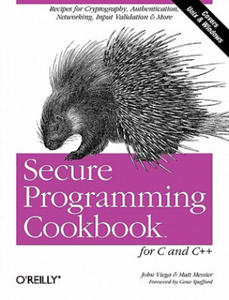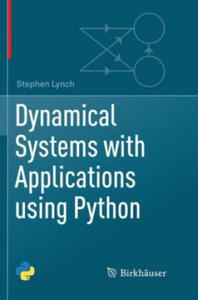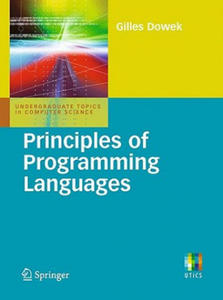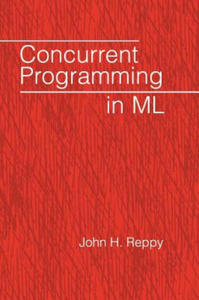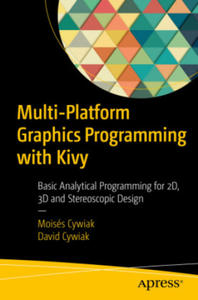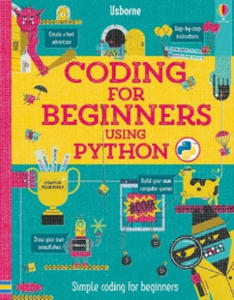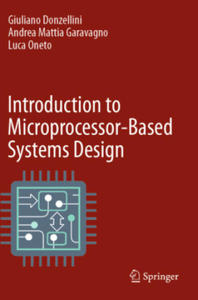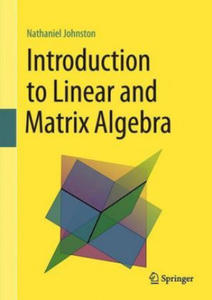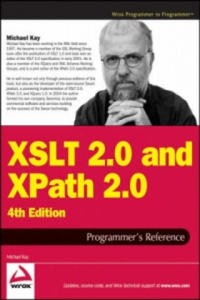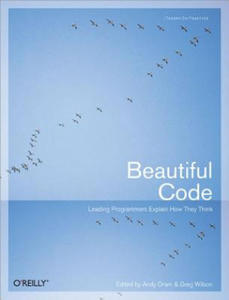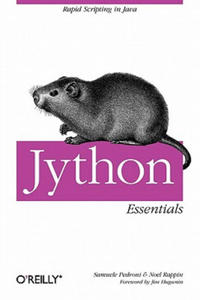krainaksiazek introduction to computer programming using java 20054238
- znaleziono 92 produkty w 6 sklepach
Secure Programming Cookbook for C & C++ O'Reilly Media
Książki / Literatura obcojęzyczna
Password sniffing, spoofing, buffer overflows, and denial of service: these are only a few of the attacks on today's computer systems and networks. At the root of this epidemic is poorly written, poorly tested, and insecure code that puts everyone at risk. Clearly, today's developers need help figuring out how to write code that attackers won't be able to exploit. But writing such code is surprisingly difficult. Secure Programming Cookbook for C and C++ is an important new resource for developers serious about writing secure code. It contains a wealth of solutions to problems faced by those who care about the security of their applications. It covers a wide range of topics, including safe initialization, access control, input validation, symmetric and public key cryptography, cryptographic hashes and MACs, authentication and key exchange, PKI, random numbers, and anti-tampering. The rich set of code samples provided in the book's more than 200 recipes will help programmers secure the C and C++ programs they write for both Unix(r) (including Linux(r)) and Windows(r) environments.Readers will learn: * How to avoid common programming errors, such as buffer overflows, race conditions, and format string problems * How to properly SSL-enable applications * How to create secure channels for client-server communication without SSL * How to integrate Public Key Infrastructure (PKI) into applications * Best practices for using cryptography properly * Techniques and strategies for properly validating input to programs * How to launch programs securely * How to use file access mechanisms properly * Techniques for protecting applications from reverse engineering The book's web site supplements the book by providing a place to post new recipes, including those written in additional languages like Perl, Java, and Python. Monthly prizes will reward the best recipes submitted by readers. Secure Programming Cookbook for C and C++ is destined to become an essential part of any developer's library, a code companion developers will turn to again and again as they seek to protect their systems from attackers and reduce the risks they face in today's dangerous world.
Sklep: Libristo.pl
Programming Interactivity, 2e O'Reilly Media
Książki / Literatura obcojęzyczna
Want to create rich interactive experiences with your artwork, designs, or prototypes, using electronics and programming? This is the place to start. Programming Interactivity helps you explore common themes in interactive art and design, including 2D and 3D graphics, sound, physical interaction, computer vision, geolocation, and more. No programming experience is required to get started. Learn the basics of programming and electronics with this book, and get working code samples you can use right away. You'll also find the background and technical information you need to design, program, build, and troubleshoot your own projects. The second edition brings you up-to-date on the latest versions of these three freely available tools created specifically for artists and designers: * Processing, a Java-based programming language and environment for building projects on the desktop, Web, or mobile phones * Arduino, a system that integrates a microcontroller prototyping board, development environment, and programming language for creating your own sensor and control hardware * openFrameworks, a coding framework for designers and artists that uses the powerful C++ programming language
Sklep: Libristo.pl
Dynamical Systems with Applications using Python Springer Nature Switzerland AG
Książki / Literatura obcojęzyczna
This textbook provides a broad introduction to continuous and discrete dynamical systems. With its hands-on approach, the text leads the reader from basic theory to recently published research material in nonlinear ordinary differential equations, nonlinear optics, multifractals, neural networks, and binary oscillator computing. Dynamical Systems with Applications Using Python takes advantage of Python's extensive visualization, simulation, and algorithmic tools to study those topics in nonlinear dynamical systems through numerical algorithms and generated diagrams. After a tutorial introduction to Python, the first part of the book deals with continuous systems using differential equations, including both ordinary and delay differential equations. The second part of the book deals with discrete dynamical systems and progresses to the study of both continuous and discrete systems in contexts like chaos control and synchronization, neural networks, and binary oscillator computing. These later sections are useful reference material for undergraduate student projects. The book is rounded off with example coursework to challenge students' programming abilities and Python-based exam questions. This book will appeal to advanced undergraduate and graduate students, applied mathematicians, engineers, and researchers in a range of disciplines, such as biology, chemistry, computing, economics, and physics. Since it provides a survey of dynamical systems, a familiarity with linear algebra, real and complex analysis, calculus, and ordinary differential equations is necessary, and knowledge of a programming language like C or Java is beneficial but not essential.
Sklep: Libristo.pl
Principles of Programming Languages Springer London Ltd
Książki / Literatura obcojęzyczna
The development of programming languages has radically modified our relation to language, complexity and machines. This book is an introduction to the principles around which these languages are organised imperative constructions, functional constructions, reference, dynamic data types, objects and more. Using Java as a main language, but systematically comparing it to other languages it enables the reader to understand the unifying concepts that lie beneath each particular language and provides the tools that allow the students to adapt to new programming languages.
Sklep: Libristo.pl
Concurrent Programming in ML Cambridge University Press
Książki / Literatura obcojęzyczna
Concurrent Programming in ML focuses on the practical use of concurrency to implement naturally concurrent applications. In addition to a tutorial introduction to programming in Concurrent ML (CML), the book presents three extended examples using CML for practical systems programming: a parallel software build system, a simple concurrent window manager, and an implementation of distributed tuple spaces. CML, which is included as part of the SML of New Jersey (SML/NJ) distribution, combines the best features of concurrent programming and functional programming. This book also illustrates advanced SML programming techniques, and includes a chapter on the implementation of concurrency using features provided by the SML/NJ system. It will be of interest to programmers, students, and professional researchers working in computer language development.
Sklep: Libristo.pl
Multi-Platform Graphics Programming with Kivy APress
Książki / Literatura obcojęzyczna
Modern science requires computer graphics models to provide realistic visual renderings. Learning the appropriate programming tools for 2D and 3D modeling doesn't have to be so difficult. This book reviews the best programming tools to achieve this and explains how to apply them to mobile platforms like Android. Multi-Platform Graphics Programming with Kivy provides a straightforward introductory approach for designing 2D, 3D, and stereoscopic applications, using analytical equations from vector algebra. Throughout the book you'll look closely at this approach and develop scenes in Kivy, taking advantage of powerful mathematical functions for arrays by NumPy for Python. Unbuntu is used to develop the programs, which allows you to easily convert to Android platform. Each chapter contains step-by-step descriptions on each subject and provides complete program listings. What You'll Learn Work with Kivy, a modern, powerful multi-platform graphics system Convert and run programs on Android devices Program, fill faces, and rotate 2D and 3D polygons Apply the concepts of 2D and 3D applications Develop stereoscopic scenes Review a straightforward introduction to 2D, 3D, and stereoscopic graphics applications Use simple analytical equations from vector algebra Who This Book Is For The primary audience is students and researchers in graphics programming with experience in analytical equations.
Sklep: Libristo.pl
Coding for Beginners: Using Python Usborne Publishing Ltd
Książki / Literatura obcojęzyczna
An introduction to coding for complete beginners, this friendly and accessible book will teach children the basics of Python (a widely used programming language), allowing them to get inside the code of their computer and create simple games and animations on screen.
Sklep: Libristo.pl
Random Signals for Engineers Using MATLAB (R) and Mathcad (R) Springer-Verlag New York Inc.
Książki / Literatura obcojęzyczna
This introduction to random variables and signals provides engineering students with the analytical and computational tools for processing random signals using linear systems. It presents the underlying theory as well as examples and applications using computational aids throughout, in particular, computer-based symbolic computation programs are used for performing the analytical manipulations and the numerical calculations. The accompanying CD-ROM provides MathcadTM and MatlabTM notebooks and sheets to develop processing methods. Intended for a one-semester course for advanced undergraduate or beginning graduate students, the book covers such topics as: set theory and probability; random variables, distributions, and processes; deterministic signals, spectral properties, and transformations; and filtering, and detection theory. The large number of worked examples together with the programming aids make the book eminently suited for self study as well as classroom use.
Sklep: Libristo.pl
Introduction to Microprocessor-Based Systems Design Springer, Berlin
Książki / Literatura obcojęzyczna
This book is intended for a first course on microprocessor-based systems design for engineering and computer science students. It starts with an introduction of the fundamental concepts, followed by a practical path that guides readers to developing a basic microprocessor example, using a step-by-step problem-solving approach. Then, a second microprocessor is presented, and readers are guided to the implementation and programming of microcomputer systems based on it. The numerous worked examples and solved exercises allow a better understanding and a more effective learning. All the examples and exercises were developed on Deeds (Digital Electronics Education and Design Suite), which is freely available online on a website developed and maintained by the authors. The discussed examples can be simulated by using Deeds and the solutions to all exercises and examples can be found on that website. Further, in the last part of this book, different microprocessor-based systems, which have been specifically thought for educational purposes, are extensively developed, simulated and implemented on FPGA-based platforms. This textbook draws on the authors' extensive experience in teaching and developing learning materials for bachelor's and master's engineering courses. It can be used for self-study as well, and even independently from the simulator. Thanks to the learning-by-doing approach and the plentiful examples, no prior knowledge in computer programming is required.
Sklep: Libristo.pl
Introduction to Fuzzy Logic John Wiley and Sons Ltd
Książki / Literatura obcojęzyczna
INTRODUCTION TO FUZZY LOGICLearn more about the history, foundations, and applications of fuzzy logic in this comprehensive resource by an academic leaderIntroduction to Fuzzy Logic delivers a high-level but accessible introduction to the rapidly growing and evolving field of fuzzy logic and its applications. Distinguished engineer, academic, and author James K. Peckol covers a wide variety of practical topics, including the differences between crisp and fuzzy logic, the people and professionals who find fuzzy logic useful, and the advantages of using fuzzy logic.While the book assumes a solid foundation in embedded systems, including basic logic design, and C/C++ programming, it is written in a practical and easy-to-read style that engages the reader and assists in learning and retention. The author includes introductions of threshold and perceptron logic to further enhance the applicability of the material contained within.After introducing readers to the topic with a brief description of the history and development of the field, Introduction to Fuzzy Logic goes on to discuss a wide variety of foundational and advanced topics, like:* A review of Boolean algebra, including logic minimization with algebraic means and Karnaugh maps* A discussion of crisp sets, including classic set membership, set theory and operations, and basic classical crisp set properties* A discussion of fuzzy sets, including the foundations of fuzzy set logic, set membership functions, and fuzzy set properties* An analysis of fuzzy inference and approximate reasoning, along with the concepts of containment and entailment and relations between fuzzy subsetsPerfect for mid-level and upper-level undergraduate and graduate students in electrical, mechanical, and computer engineering courses, Introduction to Fuzzy Logic covers topics included in many artificial intelligence, computational intelligence, and soft computing courses. Math students and professionals in a wide variety of fields will also significantly benefit from the material covered in this book.
Sklep: Libristo.pl
Introduction to Linear and Matrix Algebra Springer Nature Switzerland AG
Książki / Literatura obcojęzyczna
This textbook emphasizes the interplay between algebra and geometry to motivate the study of linear algebra. Matrices and linear transformations are presented as two sides of the same coin, with their connection motivating inquiry throughout the book. By focusing on this interface, the author offers a conceptual appreciation of the mathematics that is at the heart of further theory and applications. Those continuing to a second course in linear algebra will appreciate the companion volume Advanced Linear and Matrix Algebra. Starting with an introduction to vectors, matrices, and linear transformations, the book focuses on building a geometric intuition of what these tools represent. Linear systems offer a powerful application of the ideas seen so far, and lead onto the introduction of subspaces, linear independence, bases, and rank. Investigation then focuses on the algebraic properties of matrices that illuminate the geometry of the linear transformations that they represent. Determinants, eigenvalues, and eigenvectors all benefit from this geometric viewpoint. Throughout, "Extra Topic" sections augment the core content with a wide range of ideas and applications, from linear programming, to power iteration and linear recurrence relations. Exercises of all levels accompany each section, including many designed to be tackled using computer software.Introduction to Linear and Matrix Algebra is ideal for an introductory proof-based linear algebra course. The engaging color presentation and frequent marginal notes showcase the author's visual approach. Students are assumed to have completed one or two university-level mathematics courses, though calculus is not an explicit requirement. Instructors will appreciate the ample opportunities to choose topics that align with the needs of each classroom, and the online homework sets that are available through WeBWorK.
Sklep: Libristo.pl
XSLT 2.0 and XPath 2.0 Programmer's Reference 4e John Wiley & Sons Inc
Książki / Literatura obcojęzyczna
This book is primarily a practical reference book for professional XSLT developers. It assumes no previous knowledge of the language, and many developers have used it as their first introduction to XSLT; however, it is not structured as a tutorial, and there are other books on XSLT that provide a gentler approach for beginners. The book does assume a basic knowledge of XML, HTML, and the architecture of the Web, and it is written for experienced programmers. There's no assumption that you know any particular language such as Java or Visual Basic, just that you recognize the concepts that all programming languages have in common. The book is suitable both for XSLT 1.0 users upgrading to XSLT 2.0, and for newcomers to XSLT. The book is also equally suitable whether you work in the Java or .NET world. As befits a reference book, a key aim is that the coverage should be comprehensive and authoritative. It is designed to give you all the details, not just an overview of the 20 percent of the language that most people use 80 percent of the time.It's designed so that you will keep coming back to the book whenever you encounter new and challenging programming tasks, not as a book that you skim quickly and then leave on the shelf. If you like detail, you will enjoy this book; if not, you probably won't. But as well as giving the detail, this book aims to explain the concepts, in some depth. It's therefore a book for people who not only want to use the language but who also want to understand it at a deep level. The book aims to tell you everything you need to know about the XSLT 2.0 language. It gives equal weight to the things that are new in XSLT 2.0 and the things that were already present in version 1.0. The book is about the language, not about specific products. However, there are appendices about Saxon (the author's own implementation of XSLT 2.0), about the Altova XSLT 2.0 implementation, and about the Java and Microsoft APIs for controlling XSLT transformations, which will no doubt be upgraded to handle XSLT 2.0 as well as 1.0. A third XSLT 2.0 processor, Gestalt, was released shortly before the book went to press, too late to describe it in any detail. But the experience of XSLT 1.0 is that there has been a very high level of interoperability between different XSLT processors, and if you can use one of them, then you can use them all.In the previous edition we split XSLT 2.0 and XPath 2.0 into separate volumes. The idea was that some readers might be interested in XPath alone. However, many bought the XSLT 2.0 book without its XPath companion and were left confused as a result; so this time, the material is back together. The XPath reference information is in self-contained chapters, so it should still be accessible when you use XPath in contexts other than XSLT. The book does not cover XSL Formatting Objects, a big subject in its own right. Nor does it cover XML Schemas in any detail. If you want to use these important technologies in conjunction with XSLT, there are other books that do them justice. This book contains twenty chapters and eight appendixes (the last of which is a glossary) organized into four parts. The following section outlines what you can find in each part, chapter, and appendix. Part I: Foundations: The first part of the book covers essential concepts. You should read these before you start coding.If you ignore this advice, as most people do, then you read them when you get to that trough of despair when you find it impossible to make the language do anything but the most trivial tasks. XSLT is different from other languages, and to make it work for you, you need to understand how it was designed to be used. Chapter 1: XSLT in Context: This chapter explains how XSLT fits into the big picture: how the language came into being and how it sits alongside other technologies. It also has a few simple coding examples to keep you alert. Chapter 2: The XSLT Processing Model: This is about the architecture of an XSLT processor: the inputs, the outputs, and the data model. Understanding the data model is perhaps the most important thing that distinguishes an XSLT expert from an amateur; it may seem like information that you can't use immediately, but it's knowledge that will stop you making a lot of stupid mistakes. Chapter 3: Stylesheet Structure: XSLT development is about writing stylesheets, and this chapter takes a bird's eye view of what stylesheets look like.It explains the key concepts of rule-based programming using templates, and explains how to undertake programming-in-the-large by structuring your application using modules and pipelines. Chapter 4: Stylesheets and Schemas: A key innovation in XSLT 2.0 is that stylesheets can take advantage of knowledge about the structure of your input and output documents, provided in the form of an XML Schema. This chapter provides a quick overview of XML Schema to describe its impact on XSLT development. Not everyone uses schemas, and you can skip this chapter if you fall into that category. Chapter 5: The Type System: XPath 2.0 and XSLT 2.0 offer strong typing as an alternative to the weak typing approach of the 1.0 languages. This means that you can declare the types of your variables, functions, and parameters, and use this information to get early warning of programming errors. This chapter explains the data types available and the mechanisms for creating user-defined types. Part II: XSLT and XPath Reference: This section of the book contains reference material, organized in the hope that you can easily find what you need when you need it.It's not designed for sequential reading, though you might well want to leaf through the pages to discover what's there. Chapter 6: XSLT Elements: This monster chapter lists all the XSLT elements you can use in a stylesheet, in alphabetical order, giving detailed rules for the syntax and semantics of each element, advice on usage, and examples. This is probably the part of the book you will use most frequently as you become an expert XSLT user. It's a "no stone unturned" approach, based on the belief that as a professional developer you need to know what happens when the going gets tough, not just when the wind is in your direction. Chapter 7: XPath Fundamentals: This chapter explains the basics of XPath: the low-level constructs such as literals, variables, and function calls. It also explains the context rules, which describe how the evaluation of XPath expressions depends on the XSLT processing context in which they appear. Chapter 8: XPath: Operators on Items: XPath offers the usual range of operators for performing arithmetic, boolean comparison, and the like.However, these don't always behave exactly as you would expect, so it's worth reading this chapter to see what's available and how it differs from the last language that you used. Chapter 9: XPath: Path Expressions: Path expressions are what make XPath special; they enable you to navigate around the structure of an XML document. This chapter explains the syntax of path expressions, the 13 axes that you can use to locate the nodes that you need, and associated operators such as union, intersection, and difference. Chapter 10: XPath: Sequence Expressions: Unlike XPath 1.0, in version 2.0 all values are sequences (singletons are just a special case). Some of the most important operators in XPath 2.0 are those that manipulate sequences, notably the "for" expression, which translates one sequence into another by applying a mapping. Chapter 11: XPath: Type Expressions: The type system was explained in Chapter 5; this chapter explains the operations that you can use to take advantage of types. This includes the "cast" operation which is used to convert values from one type to another.A big part of this chapter is devoted to the detailed rules for how these conversions are done.Chapter 12: XSLT Patterns: This chapter returns from XPath to a subject that's specific to XSLT. Patterns are used to define template rules, the essence of XSLT's rule-based programming approach. The reason for explaining them now is that the syntax and semantics of patterns depends strongly on the corresponding rules for XPath expressions. Chapter 13: The Function Library: XPath 2.0 includes a library of functions that can be called from any XPath expression; XSLT 2.0 extends this with some additional functions that are available only when XPath is used within XSLT. The library has grown immensely since XPath 1.0. This chapter provides a single alphabetical reference for all these functions. Chapter 14: Regular Expressions: Processing of text is an area where XSLT 2.0 and XPath 2.0 are much more powerful than version 1.0, and this is largely through the use of constructs that exploit regular expressions. If you're familiar with regexes from languages such as Perl, this chapter tells you how XPath regular expressions differ. If you're new to the subject, it explains it from first principles.Chapter 15: Serialization: Serialization in XSLT means the ability to generate a textual XML document from the tree structure that's manipulated by a stylesheet. This isn't part of XSLT processing proper, so (following W3C's lead) it's separated it into its own chapter. You can control serialization from the stylesheet using an declaration, but many products also allow you to control it directly via an API. Part III: Exploitation: The final section of the book is advice and guidance on how to take advantage of XSLT to write real applications. It's intended to make you not just a competent XSLT coder, but a competent designer too. The best way of learning is by studying the work of others, so the emphasis here is on practical case studies. Chapter 16: Extensibility: This chapter describes the "hooks" provided in the XSLT specification to allow vendors and users to plug in extra functionality. The way this works will vary from one implementation to another, so we can't cover all possibilities, but one important aspect that the chapter does cover is how to use such extensions and still keep your code portable.Chapter 17: Stylesheet Design Patterns: This chapter explores a number of design and coding patterns for XSLT programming, starting with the simplest "fill-in-the-blanks" stylesheet, and extending to the full use of recursive programming in the functional programming style, which is needed to tackle problems of any computational complexity. This provides an opportunity to explain the thinking behind functional programming and the change in mindset needed to take full advantage of this style of development. Chapter 18: Case Study: XMLSpec: XSLT is often used for rendering documents, so where better to look for a case study than the stylesheets used by the W3C to render the XML and XSLT specifications, and others in the same family, for display on the web? The resulting stylesheets are typical of those you will find in any publishing organization that uses XML to develop a series of documents with a compatible look-and-feel. Chapter 19: Case Study: A Family Tree: Displaying a family tree is another typical XSLT application.This example with semi-structured data-a mixture of fairly complex data and narrative text-that can be presented in many different ways for different audiences. It also shows how to tackle another typical XSLT problem, conversion of the data into XML from a legacy text-based format. As it happens, this uses nearly all the important new XSLT 2.0 features in one short stylesheet. But another aim of this chapter is to show a collection of stylesheets doing different jobs as part of a complete application. Chapter 20: Case Study: Knight's Tour: Finding a route around a chessboard where a knight visits every square without ever retracing its steps might sound a fairly esoteric application for XSLT, but it's a good way of showing how even the most complex of algorithms are within the capabilities of the language. You may not need to tackle this particular problem, but if you want to construct an SVG diagram showing progress against your project plan, then the problems won't be that dissimilar. Part IV: Appendices: A ppendix A: XPath 2.0 Syntax Summary: Collects the XPath grammar rules and operator precedences into one place for ease of reference.Appendix B: Error Codes: A list of all the error codes defined in the XSLT and XPath language specifications, with brief explanations to help you understand what's gone wrong. Appendix C: Backward Compatibility: The list of things you need to look out for when converting applications from XSLT 1.0. Appendix D: Microsoft XSLT Processors: Although the two Microsoft XSLT processors don't yet support XSLT 2.0, we thought many readers would find it useful to have a quick summary here of the main objects and methods used in their APIs. Appendix E: JAXP: the Java API for XML Processing: JAXP is an interface rather than a product. Again, it doesn't have explicit support yet for XSLT 2.0, but Java programmers will often be using it in XSLT 2.0 projects, so the book includes an overview of the classes and methods available. Appendix F: Saxon: At the time of writing Saxon (developed by the author of this book) provides the most comprehensive implementation of XSLT 2.0 and XPath 2.0, so its interfaces and extensions are covered in some detail. Appendix G: Altova: Altova, the developers of XML Spy, have an XSLT 2.0 processor that can be used either as part of the development environment or as a freestanding component.This appendix gives details of its interfaces. Appendix H: Glossary Note: CD-ROM/DVD and other supplementary materials are not included as part of eBook file.
Sklep: Libristo.pl
Beautiful Code O'Reilly Media
Książki / Literatura obcojęzyczna
How do the experts solve difficult problems in software development? In this unique and insightful book, leading computer scientists offer case studies that reveal how they found unusual, carefully designed solutions to high-profile projects. You will be able to look over the shoulder of major coding and design experts to see problems through their eyes. This is not simply another design patterns book, or another software engineering treatise on the right and wrong way to do things. The authors think aloud as they work through their project's architecture, the tradeoffs made in its construction, and when it was important to break rules. "Beautiful Code" is an opportunity for master coders to tell their story. All author royalties will be donated to Amnesty International. The book includes the following contributions: "Beautiful Brevity: Rob Pike's Regular Expression Matcher" by Brian Kernighan, Department of Computer Science, Princeton University; "Subversion's Delta Editor: Interface as Ontology" by Karl Fogel, editor of "QuestionCopyright.org", Co-founder of Cyclic Software, the first company offering commercial CVS support; "The Most Beautiful Code I Never Wrote" by Jon Bentley, Avaya Labs Research; "Finding Things" by Tim Bray, Director of Web Technologies at Sun Microsystems, co-inventor of XML 1.0; "Correct, Beautiful, Fast (In That Order): Lessons From Designing XML Validators" by Elliotte Rusty Harold, Computer Science Department at Polytechnic University, author of "Java I/O, Java Network Programming", and "XML in a Nutshell" (O'Reilly); and, "The Framework for Integrated Test: Beauty through Fragility" by Michael Feathers, consultant at Object Mentor, author of "Working Effectively with Legacy Code" (Prentice Hall). It also includes: "Beautiful Tests" by Alberto Savoia, Chief Technology Officer, Agitar Software Inc; "On-the-Fly Code Generation for Image Processing" by Charles Petzold, author "Programming Windows and Code: The Hidden Language of Computer Hardware and Software" (both Microsoft Press); "Top Down Operator Precedence" by Douglas Crockford, architect at Yahoo!Inc, Founder and CTO of State Software, where he discovered JSON; "Accelerating Population Count" by Henry Warren, currently works on the Blue Gene petaflop computer project Worked for IBM for 41 years; "Secure Communication: The Technology of Freedom" by Ashish Gulhati, Chief Developer of Neomailbox, an Internet privacy service Developer of Cryptonite, an OpenPGP-compatible secure webmail system; and, "Growing Beautiful Code in BioPerl" by Lincoln Stein, investigator at Cold Spring Harbor Laboratory - develops databases and user interfaces for the Human Genome Project using the Apache server and its module API.It also includes: "The Design of the Gene Sorter" by Jim Kent, Genome Bioinformatics Group, University of California Santa Cruz; "How Elegant Code Evolves With Hardware: The Case Of Gaussian Elimination" by Jack Dongarra, University Distinguished Professor of Computer Science in the Computer Science Department at the University of Tennessee, also distinguished Research Staff member in the Computer Science and Mathematics Division at Oak Ridge National Laboratory (ORNL) and Piotr Luszczek, Research Professor at the University of Tennessee; "Beautiful Numerics" by Adam Kolawa, co-founder and CEO of Parasoft; and, "The Linux Kernel Driver Model" by Greg Kroah-Hartman, SuSE Labs/Novell, Linux kernel maintainer for driver subsystems, author of "Linux Kernel in a Nutshell", co-author of "Linux Device Drivers, 3rd Edition" (O'Reilly).It also includes: "Another Level of Indirection" by Diomidis Spinellis, Associate Professor at the Department of Management Science and Technology at the Athens University of Economics and Business, Greece; "An Examination of Python's Dictionary Implementation" by Andrew Kuchling, longtime member of the Python development community, and a director of the Python Software Foundation; "Multi-Dimensional Iterators in NumPy" by Travis Oliphant, Assistant Professor in the Electrical and Computer Engineering Department at Brigham Young University; and, "A Highly Reliable Enterprise System for NASAs Mars Rover Mission" by Ronald Mak, co-founder and CTO of Willard & Lowe Systems, Inc, formerly a senior scientist at the Research Institute for Advanced Computer Science on contract to NASA Ames.It also includes: "ERP5: Designing for Maximum Adaptability" by Rogerio de Carvalho, researcher at the Federal Center for Technological Education of Campos (CEFET Campos), Brazil and Rafael Monnerat, IT Analyst at CEFET Campos, and an offshore consultant for Nexedi SARL; "A Spoonful of Sewage" by Bryan Cantrill, Distinguished Engineer at Sun Microsystems, where he has spent most of his career working on the Solaris kernel; "Distributed Programming with MapReduce" by Jeff Dean and Sanjay Ghemawat, Google Fellows in Google's Systems Infrastructure Group; "Beautiful Concurrency" by Simon Peyton Jones, Microsoft Research, key contributor to the design of the functional language Haskell, and lead designer of the Glasgow Haskell Compiler (GHC); and, "Syntactic Abstraction: The syntax-case expander" by Kent Dybvig, Developer of Chez Scheme and author of the Scheme Programming Language. It also includes: "Object-Oriented Patterns and a Framework for Networked Software" by William Otte, a Ph.D. student in the Department of Electrical Engineering and Computer Science (EECS) at Vanderbilt University and Doug Schmidt, Full Professor in the Electrical Engineering and Computer Science (EECS) Department, Associate Chair of the Computer Science and Engineering program, and a Senior Research Scientist at the Institute for Software Integrated Systems (ISIS) at Vanderbilt University; "Integrating Business Partners the RESTful Way" by Andrew Patzer, Director of the Bioinformatics Program at the Medical College of Wisconsin; and, "Beautiful Debugging" by Andreas Zeller, computer science professor at Saarland University, author of "Why Programs Fail: A Guide to Systematic Debugging" (Morgan Kaufman).It also includes: "Code That's Like an Essay" by Yukihiro Matsumoto, inventor of the Ruby language; "Designing Interfaces Under Extreme Constraints: the Stephen Hawking editor" by Arun Mehta, professor and chairman of the Computer Engineering department of JMIT, Radaur, Haryana, India; "Emacspeak: The Complete Audio Desktop" by TV Raman, Research Scientist at Google where he focuses on web applications; "Code in Motion" by Christopher Seiwald, founder and CTO of Perforce Software and Laura Wingerd, vice president of product technology at Perforce Software, author of "Practical Perforce" (O'Reilly); and, "Writing Programs for 'The Book'" by Brian Hayes who writes the Computing Science column in American Scientist magazine, author of "Infrastructure: A Field Guide to the Industrial Landscape"(W.W. Norton).
Sklep: Libristo.pl
Beginning Jakarta EE Web Development APress
Książki / Literatura obcojęzyczna
Start building Java-based web applications now, even if you're a complete newcomer to Java. Comprehensive and example-driven, this book is all you need to develop dynamic Java-based web applications using JSP, connect to databases with JSF, and put them into action using the popular open source Java web server, Apache Tomcat. Beginning Jakarta EE Web Development is a comprehensive introduction to building Java-based web applications using JavaServer Pages (JSP) using Jakarta Server Pages, JavaServer Faces (JSF) using Jakarta Server Faces, and the Apache Tomcat web application server. Other APIs including JSON and the XML-based job specification language (JSL) are covered along the way. Key concepts are made easy to grasp with numerous working examples and a walk-through of the development of a complete ecommerce project. This book is written for professionals by practicing Java web application professionals and experts. What You Will Learn Build Java-based web applications using JSP and JSF with Eclipse Jakarta EE Use the new Jakarta Server Faces APIs to create JSF applications Work with the new Jakarta Server Pages APIs to create JSPs Integrate and implement JSF and JSP together Build an online ecommerce web application along the way Who This Book Is For Programmers new to programming in Java and programming in general.
Sklep: Libristo.pl
Jython Essentials O'Reilly Media
Książki / Literatura obcojęzyczna
Jython is an implementation of the Python programming language written in 100% pure Java, so it runs under any compliant Java Virtual Machine. The secret to Jython's popularity lies in the combination of Java's libraries and tools with Python's rapid development capabilities. With Jython, you can write Python programs that integrate seamlessly with any Java code. And like Python, Jython can be used interactively, so you can get immediate results as you are programming. Jython Essentials provides a solid introduction to the Python language, offering a brief but thorough tour of the Python concepts you'll need to understand to use Jython effectively. The book makes frequent comparisons between Python and Java, with special emphasis on the different object-oriented semantics of the two languages, so Java programmers can quickly get up to speed with Jython. Jython Essentials also covers the various ways in which Jython and Java can interact. For example, Jython code can create instances of pre-existing Java classes and call methods in those instances.You can write Jython classes that are direct subclasses of existing Java classes and use introspection to discern the capabilities of JavaBeans components. This book provides examples of using Jython with existing Java libraries, including the Swing GUI toolkit, the JDBC database API, the Servlet API, and various XML tools. And finally, the book shows how Jython can be used as a scripting language within a Java program. With Jython Essentials, you have everything you need to start creating applications that mix the best of Python's interactivity and Java's robust libraries.
Sklep: Libristo.pl
szukaj w Kangoo krainaksiazek introduction to computer programming using java 20054238
Sklepy zlokalizowane w miastach: Warszawa, Kraków, Łódź, Wrocław, Poznań, Gdańsk, Szczecin, Bydgoszcz, Lublin, Katowice
Szukaj w sklepach lub całym serwisie
1. Sklepy z krainaksiazek introduction to computer programming using java 20054238
2. Szukaj na wszystkich stronach serwisu
t1=0.036, t2=0, t3=0, t4=0.013, t=0.037

